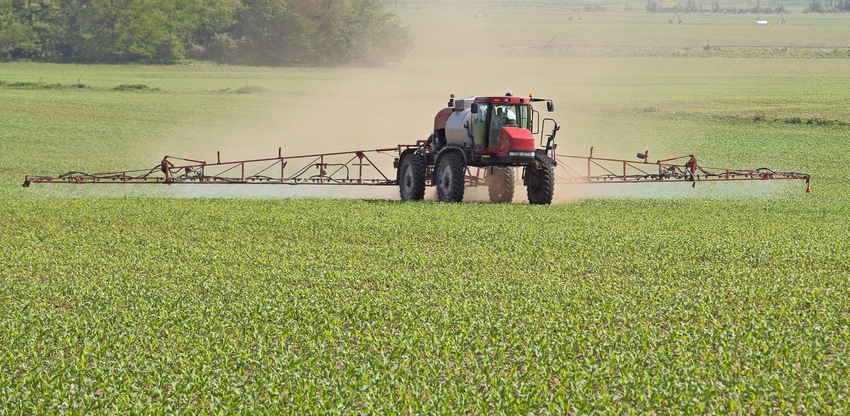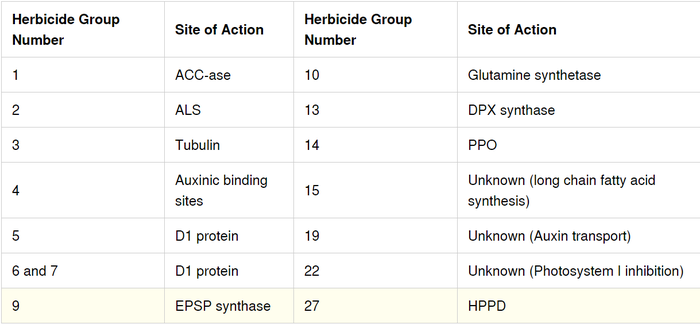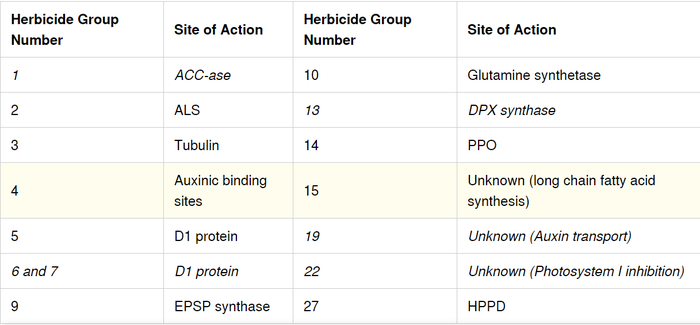December 5, 2018

Source: Iowa State University
By Meaghan Anderson and Bob Hartzler
This is part two of a four-part series originally posted by Iowa State University in 2016 on using multiple, effective herbicide sites of action (herbicide groups) at effective rates as part of a long-term weed management system. Read part one now.
After you've started working on a program that contains multiple herbicide groups (sites of action), you need to make sure you're using multiple herbicide groups that will be effective against your target weeds. For most people, the target weed will be waterhemp. Others may have problems with giant ragweed, horseweed, or other weeds. Waterhemp is the target weed in my example, but consider what your most problematic weeds are to run through this exercise for yourself.
Things to consider when determining whether a herbicide is effective against your target weed include (1) whether the herbicide is labeled to control the weed and (2) whether your target weed is resistant to the herbicide group.
Let's look at herbicides as if waterhemp is the weed that causes us the most issues. Here's a table of herbicide groups used in Iowa crops:

The table looks to contain a lot of options, but when I consider that my target weed is waterhemp, I can start removing choices and find I only have nine HG choices for waterhemp control in corn and soybean.
HG 1 consists of only grass-killing herbicides.
HG 6 and 7 are not commonly used in these crops, and they have limited activity on waterhemp.
HG 13 (clomazone) is labeled for use in soybean, but provides unacceptable waterhemp control.
HG 19 contains one chemical, diflufenzopyr, is only used in combination with dicamba in herbicide premixes. This chemical does not provide waterhemp control alone.
HG 22 includes paraquat, a non-selective contact herbicide, which could only be used prior to crop planting or as a crop desiccant. It would control emerged waterhemp, but due to its non-selectivity, it could not be used to kill weeds in an established corn or soybean crop.

After I removed some herbicide choices due to lack of activity or usefulness against waterhemp, I need to consider what my waterhemp population looks like. Do my fields have any herbicide resistances? Weeds that are currently known to be resistant in Iowa can be found at http://weedscience.org/. Iowa has biotypes of waterhemp resistant to HG 2, HG 5, HG 9, HG 14, and HG 27.
Most waterhemp in Iowa are resistant to HG 2, so I know those herbicides won't kill my waterhemp. I know that the presence of other resistances in my fields depends highly on the history of herbicide use. For example, if I've heavily used products from HG 14 postemergence in soybean in my battles with waterhemp, and it seems these products are providing less consistent waterhemp control than in the past, there is a good possibility that the waterhemp in my field is resistant to these herbicides. I should be careful about continuing my reliance on those products and need to look for other options - possibly glufosinate (HG 10) - as options against waterhemp.
The presence of resistant waterhemp will vary from field to field, often based on individual management tactics used by farmers. Waterhemp is very efficient at accumulating multiple resistances. In Iowa, at least one population has been identified that is resistant to group 2, 5, 9, 14 and 27 herbicides. It is important to determine what herbicide groups you have relied on for managing waterhemp in the past on your farm(s), and then carefully evaluate if they are still controlling weeds as effectively as in the past. What herbicides are your waterhemp surviving?
After analyzing all herbicide options, I see we only have FOUR herbicide groups that are effective against waterhemp and that waterhemp (in Iowa) is not known to have developed resistant to: Groups 3, 4, 10 and 15. However, HG 4 resistant populations of waterhemp have been identified in Nebraska and Illinois. In addition, a close relative of waterhemp, Palmer amaranth, is known to have populations resistant to HG 3. Resistance is a possibility with any herbicide. As you plan for your herbicide program next year, make sure you're including multiple sites of action that are effective against your target weeds. Evolution of herbicide resistance is inevitable in plant populations when we rely on these tools, but we can delay resistance problems by using multiple, effective herbicide groups.
Originally posted by Iowa State University.
You May Also Like




